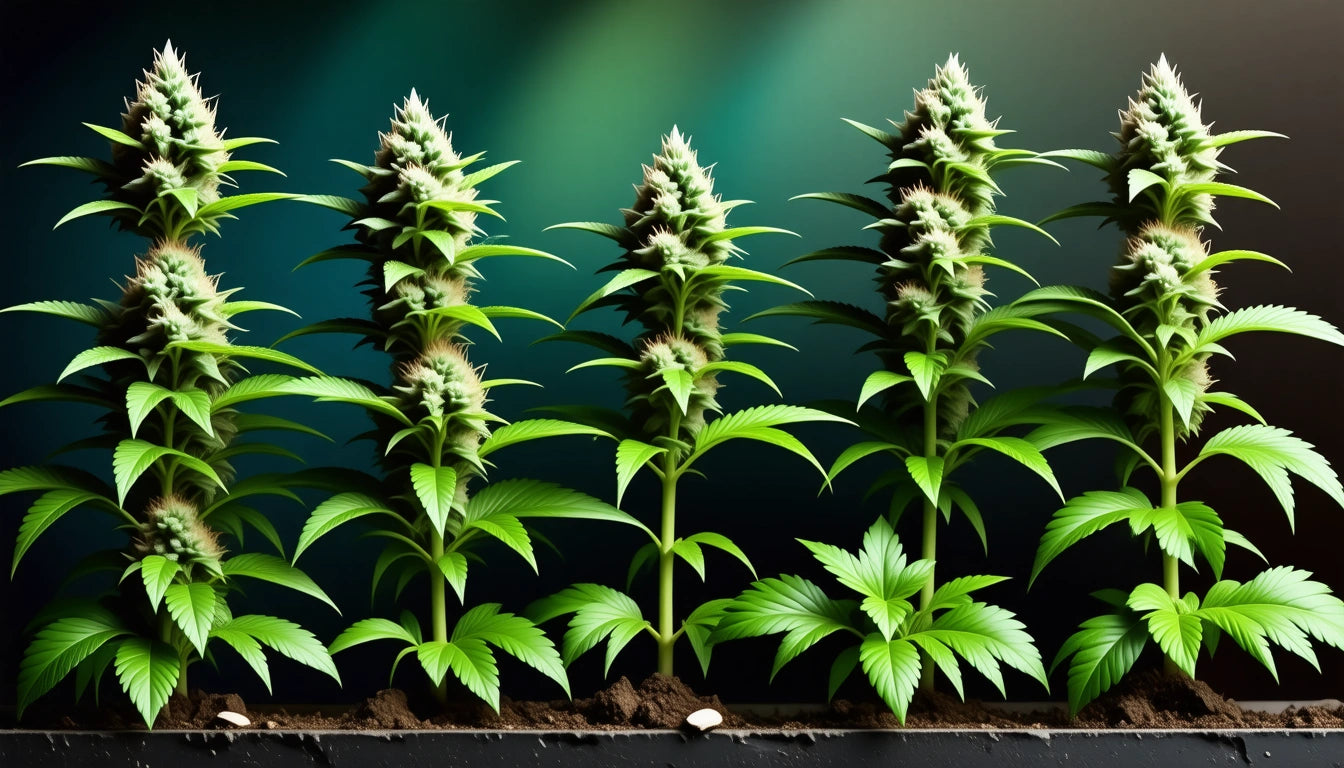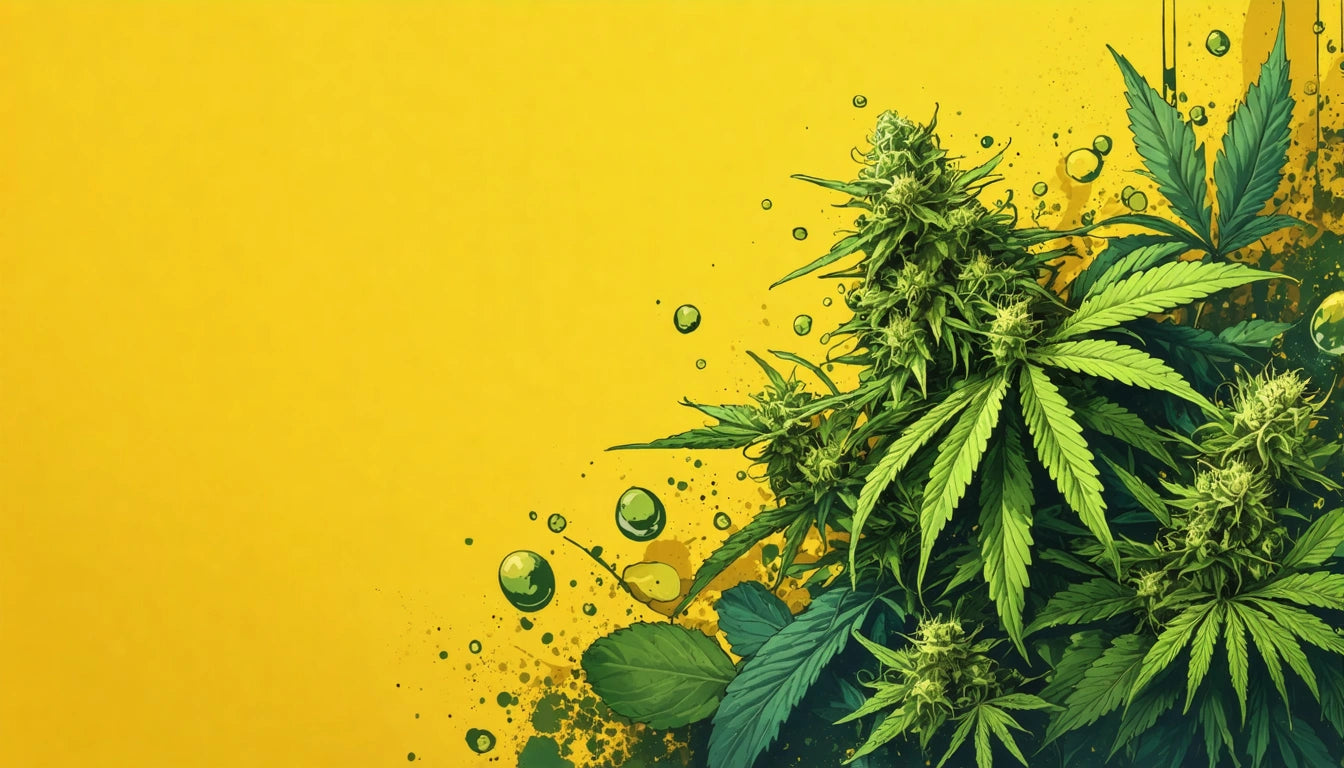Table of Contents
- Understanding Autoflower Genetics for Maximum Yields
- Optimal Growing Conditions for Autoflowers
- Lighting Schedules: 18/6 vs 12/12 vs 20/4
- Best Growing Mediums for Autoflowers
- Training Techniques for Increased Yields
- Nutrient Requirements Throughout the Growth Cycle
- Strain Selection for Specific Growing Environments
- Scaling Autoflower Production for Commercial Success
Maximizing Autoflower Yields: Tips, Genetics, and Best Practices
Autoflowering cannabis varieties have revolutionized cultivation with their quick growth cycles and resilience. Whether you're a home grower working with limited space or a commercial producer seeking efficient production cycles, understanding how to maximize autoflower yields is essential. This comprehensive guide covers everything from selecting the best autoflower genetics to optimizing growing conditions for peak harvests.
Understanding Autoflower Genetics for Maximum Yields
The foundation of any successful autoflower grow begins with quality genetics. Unlike photoperiod strains, autoflowers contain Cannabis ruderalis genetics, which trigger flowering based on age rather than light cycles. When selecting seeds, focus on reputable autoflower seed banks known for stable genetics.
The best autoflower breeders continuously work to improve yield potential while maintaining desirable traits like potency and flavor profiles. Modern autoflower genetics have come a long way from their low-yielding ancestors, with many contemporary strains producing harvests comparable to photoperiod varieties.
Key Genetic Factors Affecting Yield
- Ruderalis percentage in the genetic makeup
- Breeding stability across generations
- Inherent resistance to pests and diseases
- Growth structure and internodal spacing
For growers seeking the best yielding autoflowers, look for newer generation genetics (F4 or higher) from established breeders who specifically breed for production capacity.
Optimal Growing Conditions for Autoflowers
Autoflowers thrive under specific environmental conditions that, when optimized, can significantly boost yields. Unlike photoperiod strains, autoflowers have a fixed vegetative timeline, making early optimization crucial.
Temperature and Humidity
Maintain temperatures between 70-85 °F (21-29 °C) during the day and no more than 10 °F cooler at night. Humidity should start around 65-70% during seedling stage, gradually decreasing to 40-50% during flowering to prevent mold issues.
Container Size Considerations
Container size directly impacts autoflower yields. Since autoflowers have limited time to develop their root systems, choosing the optimal pot size is crucial. For most autoflowers, 3-5 gallon containers provide the ideal balance between root space and efficient use of growing medium.
Lighting Schedules: 18/6 vs 12/12 vs 20/4
While autoflowers don't require specific light cycles to flower, light duration significantly impacts yield. The debate between 18/6, 20/4, and even 24/0 schedules continues among growers.
Research suggests that most autoflowers produce the best yields under 18/6 or 20/4 light schedules. The 18/6 schedule (18 hours light, 6 hours darkness) provides a balance between energy efficiency and growth, while 20/4 can increase yields further at the cost of higher electricity consumption.
The 12/12 schedule, standard for photoperiod plants, typically reduces autoflower yields as it provides fewer hours of photosynthesis. However, some growers in hot climates prefer it to reduce heat stress during summer months.
Best Growing Mediums for Autoflowers
The growing medium affects nutrient availability, water retention, and oxygen levels at the root zone, all critical factors for maximizing autoflower yields.
Soil vs Coco Coir vs Hydroponics
For beginners, high-quality, light soil mixes with added perlite provide a forgiving medium. More experienced growers often achieve the best autoflower yield with coco coir or hydroponic systems.
The best coco coir for autoflowers includes products that are pre-buffered with calcium and magnesium to prevent deficiencies. When properly managed, coco can provide soil-like forgiveness with hydroponic-level growth rates.
For large-scale commercial production, efficient automated filling systems for growing mediums can significantly reduce labor costs while ensuring consistent substrate quality across multiple containers.
Training Techniques for Increased Yields
While autoflowers have traditionally been considered unsuitable for high-stress training techniques, modern genetics have changed this perspective.
Low Stress Training (LST)
LST involves gently bending and securing branches to create an even canopy, allowing more light penetration to lower bud sites. This technique should begin early, typically around day 15-20.
Topping Considerations
Contrary to conventional wisdom, topping autoflower plants can increase yields when performed correctly. The key is timing—topping should only be done on healthy plants showing their 5th node, typically around day 15-18 from sprouting.
Nutrient Requirements Throughout the Growth Cycle
Autoflowers generally require lighter feeding than photoperiod strains, particularly regarding nitrogen. Over-fertilization is a common mistake that can reduce yields.
For optimal results, use nutrient solutions specifically formulated for autoflowers or dilute standard nutrients to 50-75% of the recommended strength. Pay special attention to calcium and magnesium levels, especially when growing in coco coir.
Water Quality Factors
The best water for autoflower cultivation has a pH between 6.0-6.5 for soil and 5.8-6.2 for coco or hydroponics. Total dissolved solids (TDS) should ideally be below 150ppm before adding nutrients. Many experienced growers use reverse osmosis water with added beneficial microbes to maximize nutrient uptake efficiency.
Strain Selection for Specific Growing Environments
Different growing environments call for specific autoflower varieties to maximize yields.
Indoor Space Optimization
For limited spaces like 3x3 grow tents, choosing the best auto for 3x3 setups means selecting compact but productive strains. Varieties with indica dominance often perform well in these constraints, producing dense buds without excessive stretch.
Outdoor Considerations
The best yield autoflower outdoor varieties typically have some resistance to fluctuating temperatures and humidity levels. When selecting the best outdoor autoflower strains, consider your local climate and growing season length.
For regions with shorter summers, fast-finishing varieties that complete their cycle in 60-70 days provide reliable harvests. Some autoflowers reaching 60 days with 20% THC or higher include newer generations of Wedding Cake Auto and Gorilla Glue Auto varieties.
Sativa vs Indica Dominance
The best sativa autoflower strains typically produce more elongated plants with energetic effects, while the best indica autoflower varieties tend to be more compact with relaxing properties. Yield potential exists in both categories, though indica-dominant varieties often finish slightly faster.
Scaling Autoflower Production for Commercial Success
For commercial growers, autoflowers offer unique advantages through perpetual harvest systems. By staggering planting dates every 2-3 weeks, consistent weekly harvests become possible, maximizing facility efficiency and creating steady revenue streams.
Understanding autoflower growth and flowering timelines is essential for planning these perpetual systems effectively. Most commercial operations benefit from dedicated vegetative and flowering spaces, even though autoflowers don't require light cycle changes.
The compact nature and predictable harvest windows of autoflowers make them increasingly popular for commercial cultivation where space efficiency and quick turnover are prioritized. With proper planning and advanced growing techniques, autoflower yields can be maximized at scale, providing competitive returns compared to traditional photoperiod operations.











Leave a comment
All comments are moderated before being published.
This site is protected by hCaptcha and the hCaptcha Privacy Policy and Terms of Service apply.